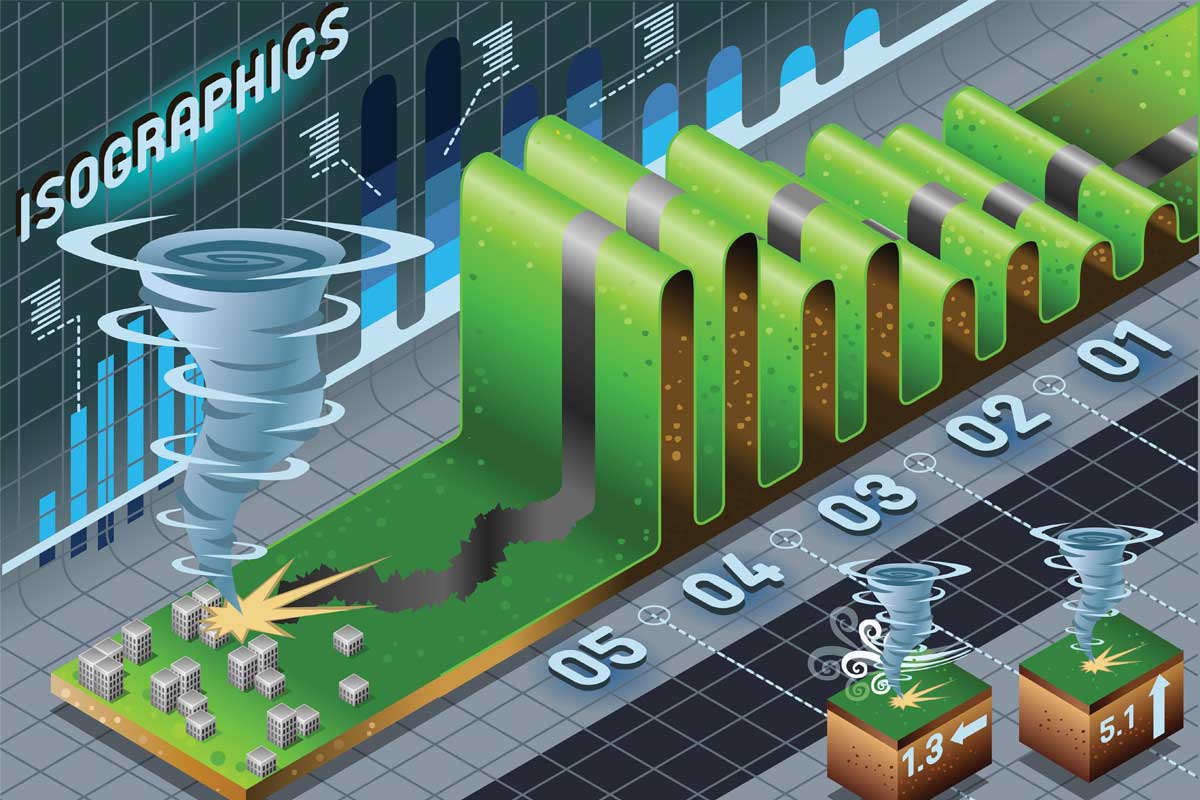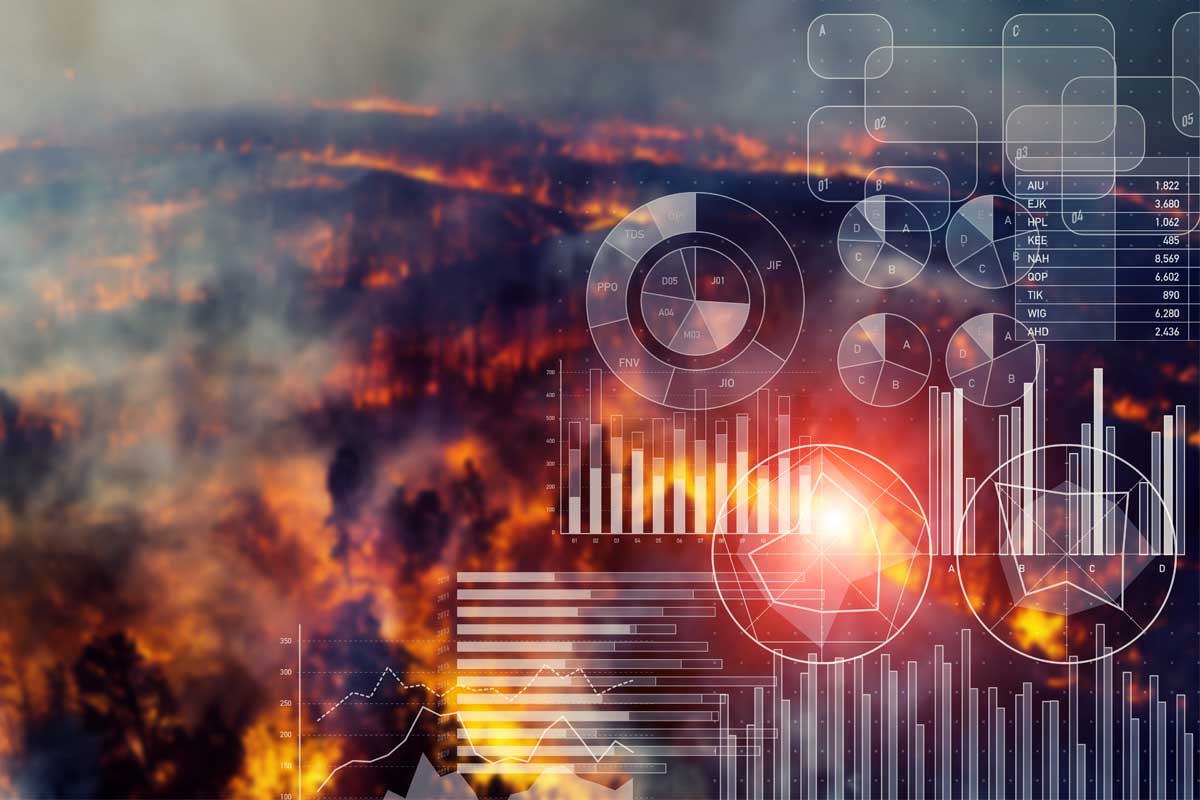
Natural disasters like fires, floods, hurricanes, and earthquakes, and tsunamis affect 218 million people and claim an average of 68,000 lives each year1. The situation continues to worsen. According to the United Nations, natural disasters now occur three times more often than they did 50 years ago2. Studies and statistics have shown that climate change can cause these disasters to become more frequent and widespread. A report by Access Partnership predicts that the annual number of natural disasters will rise 37% globally by 20253.
How Artificial Intelligence Helps Disaster Management
Researchers, scientists, and organizations are turning to artificial intelligence (AI) and machine learning (ML) for help. AI can potentially mitigate the damage of natural events by reliably processing large volumes of data in real time, which provides valuable insights to help predict natural events, and enhance mitigation responses by allocating relief resources more efficiently and effectively. More, AI and ML can help accelerate the delivery of aid to people and places affected and improve the decisions and actions of front-line relief workers.
Here is how AI is already having a real-world impact:
Damage Assessment
The U.S. Department of Defense has deployed a visual computing project, xView2, that has already seen results in assisting with disaster logistics and rescue missions on the ground in Turkey4. At a rate much faster than traditional detection methods, xView2 uses ML algorithms and satellite imagery to identify and categorize the severity of infrastructure and building damage in disaster areas.
xView2’s algorithms employ a method called “semantic segmentation,” which evaluates the individual pixels of an image and their relationship to adjacent pixels to form conclusions. For a task that traditionally took weeks to accomplish, xView2 has accelerated the detection of this assessment to hours or minutes, enabling the control center and the rescue teams to respond faster in affected areas for recovery
Predictive Analysis
Through AI, researchers and scientists can analyze patterns in past seismic activities to predict earthquakes or use historical meteorological data to forecast hurricanes. One example is IBM’s PAIRS Geoscope, an AI-driven technology that analyzes geospatial data, examining rainfall and temperature to predict the likelihood of floods5.
By processing information down to specific regions, counties, and populations, AI can also help predict the economic and human impact of natural disasters. Texas A&M University’s Zachry Department of Civil and Environmental Engineering uses AI to help communities prepare for future natural disasters while assessing impacts. Their Socio-Ecophysiological Resilience Assessment and Prediction (SERAP) tool assesses a community’s resilience using a wide range of data sources to identify factors such as governance, infrastructure, and natural resource management6. The SERAP tool helps communities plan and prepare for potential disasters and mitigate possible effects by improving social, economic, and environmental resilience.
AI-Powered Dispatching
During natural disasters, so many distress calls can flood 911 that it risks losing critical information. AI can manage a high volume of calls in record time and perform multiple functions simultaneously, unlike humans. The Association of Public-Safety Communications (APCO) uses AI to improve operations and public safety through IBM Watson’s analytics programs7. The Watson speech-to-text function feeds the context of each call into the AI’s analytics program to enhance how call centers respond to emergencies. Watson also helps provide accurate information, reduce call times, and accelerate emergency services.
AI-Assisted Communication
AI-powered chatbots can deliver lifesaving information to people affected by natural disasters through popular social media channels. Chatbots can allow disaster relief organizations to quickly communicate with more people at a fraction of the cost and target assistance to those most affected. Using Clara, a chatbot built by the Red Cross, disaster victims can ask questions about local shelters, financial assistance, volunteering, blood donation, and more8. Clara uses natural language processing (NLP), a subset of AI, to process large amounts of language data and understand what users ask.
AI in Social Media
Social media can contain crucial actionable information in the immediate aftermath of a natural disaster. But humans alone can’t manage the enormous amount of data social media users produce during emergencies. To reduce delays in response, disaster response team can leverage the open-source Artificial Intelligence Digital Response (AIDR) platform to automatically collect and classify posted tweets before other sources may be available9. AIDR uses text and images to fill information gaps and provide real-time, processed data. Then, AIDR looks for humanitarian information from this data that organizations can access and apply in their response to disasters.
Cloud-Based Emergency Management
Cloud-based AI-powered platforms can enable emergency response teams to command, control, and monitor a real-time situation from any device. One platform, Havrion Protect, allows users to manage devices, applications, and communication apps virtually in natural disasters10. For example, a response team can notify first responders and staff of an event, project emergency evacuation routes, and identify endangered people and groups.

The Limitations of AI
There are challenges to AI’s role in predicting natural disasters, first around the quality and availability of data. AI algorithms depend upon large amounts of high-quality data to make accurate predictions, but there’s a lack of reliable data in places like developing countries. AI-based methods are effective if a training dataset covers large events, but the rarity of their occurrences limits the availability of this data as well.
AI also faces the challenge of limited scope. Private-sector AI initiatives may involve a government or non-governmental agency to focus on specific community, risking the isolation of the larger regions or households in dire need11, leading to fragmentation of objectives and benefits that may result in organizations poorly incorporating or maintaining the tools.
Finally, the complexity of natural disasters is another challenge. A multitude of factors, not fully understood, influence these events. Though AI can provide valuable insights and predictions, it can’t replace human judgment and expertise.
The Future of AI in Disaster Management
AI shows vast potential to help the world enhance its disaster resilience. While AI can’t replace current systems for disaster management, it can help fill gaps and improve outcomes at every point during and after a natural disaster. Disaster responses can only improve with an increased supply of quality data, better collaboration among disaster management organizations, and an agile approach that incorporates both machine and human intelligence.
How Ambiq is Contributing
Devices that collect data from natural disasters require a consistent source of energy so there is no lapse in data for analysts and emergency personnel. Ambiq’s ultra-low power Sub-threshold Power Optimized Technology (SPOT®) platform and line of Apollo System-on-chips (SoCs) are embedded into sensors and edge devices that are placed in the eye of the storm. They provide a reliable source of energy-efficient and AI capable microchip that can help lithium-battery devices go weeks, months, or even years on a single charge.
Sources
1 Natural Disaster Statistics | January 31, 2023
2 Natural disasters occurring three times more often than 50 years ago: new FAO report| March 18, 2021
3 Natural disasters set to increase by 37% globally by 2025 – Report | March 14, 2022
4 How AI can actually be helpful in disaster response | February 20, 2023
5 The Power of AI in Predicting Natural Disasters and Climate Change | July 14, 2023
6 Leveraging Big Data and AI for Disaster Resilience and Recovery: A Step towards a Safer Future | June 25, 2023
7 AI to the rescue: 5 ways machine learning can assist during emergency situations| January 16, 2018
8 Meet Clara, the Disaster Response Chatbot | 2023
9 AIDR – Artificial Intelligence Digital Response | 2023
10 5 Uses of AI in Emergency Management | 2023
11 Natural disasters are increasing in frequency and ferocity. Here’s how AI can come to the rescue | January 14, 2020


